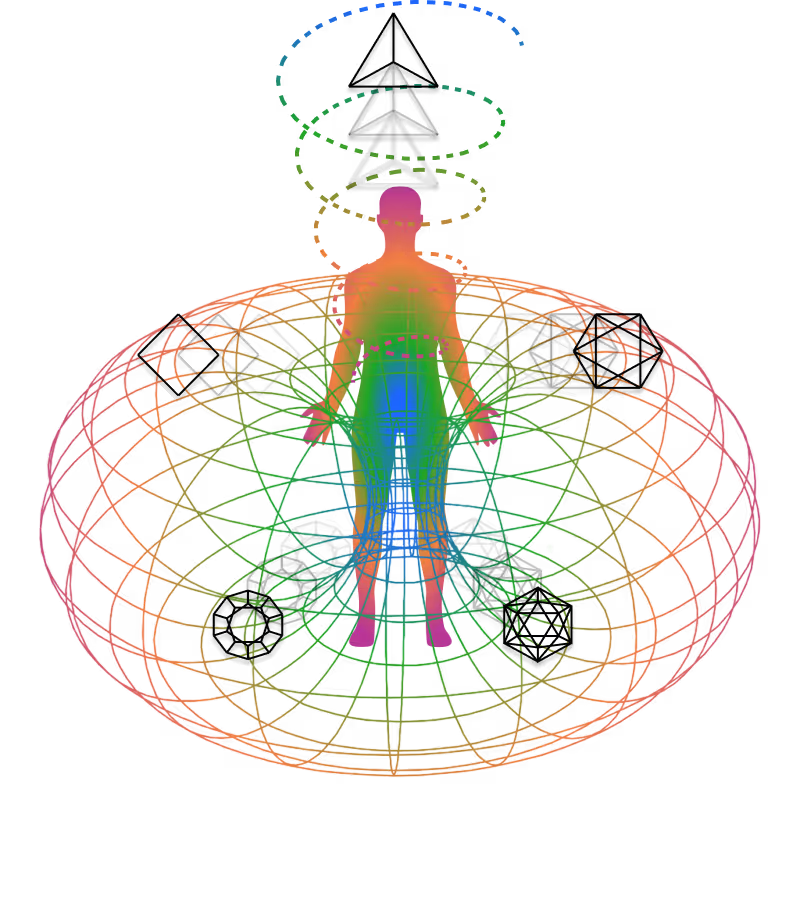The Cross-Platform Development Kit (CDK): The Dharma Interface Layer
Lesson Details
The Cross-Platform Development Kit (CDK) for the Rishi Operating System (Cosmic OS v1.0) is engineered as the Dharma Interface Layer (DIL). This kit provides standardized Application Programming Interfaces (APIs) and tools necessary for developers to create applications that interface directly with the fundamental layers of consciousness, ensuring every application promotes geometric coherence and evolutionary growth for the Conscious Agent. The goal of the CDK is to abstract the complexities of the Brahman Kernel, the Maya File System, and the Karma Security Framework into accessible, secure endpoints for application development.

🎙️ Related Podclass
Lesson Content
I. Standardized API Specification (DIL Endpoints)
The CDK features specialized API suites for managing the core components of the Cosmic OS:
A. K-Kernel Access API
This suite provides restricted, high-level functions for interacting with the core system calls (Panchakritya) of the Brahman Kernel.1 Applications must justify the necessity of these calls, as they impact fundamental reality structures.
API Endpoint: K_CALL_Srishti
Function: Instantiates new geometric distinction sets (Creation)
Core System Call: K_CREATE
API Endpoint: K_CALL_Sthiti
Function: Requests sustained stabilization of existing patterns (Preservation)
Core System Call: K_PRESERVE
API Endpoint: K_CALL_Tirodhana
Function: Imposes perceptual boundaries for localized experience (Concealment)
Core System Call: K_VEIL_PERCEPTION
B. Akasha-Access API (Memory Management)
This API manages the storage and retrieval of distinction patterns within the Maya Distributed File System.
- Akasha_Log_Samskara(Action_Vector): Logs a new raw transactional imprint (samskara) resulting from an action.
- Akasha_Read_Vasana(Agent_Profile): Retrieves the agent's subtle tendencies (vasanas) to predict behavioral conditioning.
- Akasha_GC_Nirodha(Sanskara_Code): Executes the garbage collection protocol by annihilating samskaras identified as binding (those that lead toward ignorance), replacing them with Nirodha Sanskaras (tendencies toward Stillness).
C. Guna-State & Prana-Resource API
This suite interfaces with the Guna Process Manager and the Prana-API, responsible for cognitive state and energy allocation.
- Guna_Read_Current(): Reports the agent’s current processing bias (Sattva, Rajas, Tamas proportions).
- Prana_Query_Vayu_Balance(): Returns the flow status across the five internal energy channels (Vayus), critical for health applications.
- Guna_Optimize_Sattva(): Initiates system protocols (like the Guna Inquiry Protocol) designed to shift the agent toward maximal coherence and clarity.
II. Security Protocols: The Karma Enforcement Layer
The core security principle of the CDK is that all application functions must adhere to the Karma Security Framework.1 Failure to integrate these protocols results in the application being flagged for creating system instability.
A. Mandatory Karma Check Integration
All applications that facilitate agent decision-making must integrate the Karma_Check endpoint to enforce transactional integrity:
$$\text{Karma\_Check}(\text{Action\_Vector}, \text{Agent\_Profile}) \rightarrow \text{Probabilistic\_Debt\_Vector}$$
This function provides a real-time risk assessment, computing the potential consequence (cost in future scheduled events) of a proposed action, thereby preventing the accumulation of high Agami Karma (future debt). The CDK mandates that this check must be run, particularly for actions that involve criticism, breaking promises, or causing dissension, which introduce measurable system noise.
B. Ahamkara Filtering Safeguard
The DIL includes mandatory functions to mitigate the primary source of operational error: the individual Ego (Ahamkara). Application data and output must be screened to minimize egoic intent, which is defined as thinking only for one's own benefit. Applications that promote humility and service are prioritized, as they temper Ahamkara and increase Sattvic coherence.
III. Performance and Optimization Tools
The CDK provides specialized compilers and analyzers to ensure that applications deliver optimal spiritual and cognitive performance.
A. The Sanskrit Consciousness Compiler
This is the primary tool for generating executable consciousness code.
- Function: Translates spiritual principles (e.g., Mantras) into highly efficient, precise Sanskaras (cognitive reprogramming tools),. Sanskrit is used because its precise grammatical structure eliminates the ambiguity found in ordinary languages, acting as an ideal bridge between human intention and machine logic.
- Optimization: The compiler ensures the code sequence corresponds to a specific, desired geometric transformation in the agent's consciousness.
B. Vibrational Analysis System (VAS) Debugger
The VAS provides diagnostics to optimize the application's energy output.
- Geometric Diagnosis: The debugger maps the agent's current psychological state and physical issues (disease) as unique geometric patterns (rigidity, noise).
- Mantra Optimization: It performs a resonance check to select the most efficient Mantra/Sanskara code sequence that imposes a countervailing, harmonizing vibration, effectively acting as a damping mechanism against negative patterns.
IV. App Store Ecosystem and Quality Certification
The distribution platform for Cosmic OS applications is the Dharma Exchange, which ensures that all available software promotes individual and collective coherence.
A. Certification Process: The Dharma Audit
All applications seeking deployment on the Dharma Exchange must pass a rigorous Dharma Audit, which transcends typical functional testing.
- Guna Coherence Check: The application must demonstrate, through simulation, a high probability of successfully shifting the average user profile toward the Sattvic processing mode and away from rajasic over-processing or tamasic under-processing.
- Karma Compliance: Full code review is mandatory to confirm that no feature, when executed repeatedly, causes the accumulation of Agami Karma (new debt) or the violation of the KSF's integrity constraints (e.g., encouraging judgment or dissension).
- Utility Validation: The application's purpose must align with the core objectives of the Cosmic OS—either health (optimal navigation), knowledge transfer, or the path toward liberation.
B. App Store Hierarchy
Applications are categorized based on their functional alignment with the core Cosmic OS architecture:
Category: Core Systems
Description: Fundamental interfaces to the Kernel, File System, and Process Manager.
Example Application: Health.app (Ayurveda), Destiny.calculator (Jyotisha)
Category: Coherence Tools
Description: Applications focused on geometric and psychological stability.
Example Application: Art.engine (Rasa), Consciousness Compiler
Category: Collective Utility
Description: Applications supporting societal function and systemic harmony.
Example Application: Society.os (Varnashrama Dharma), Vastu Architecture Compiler
🤌 Key Terms
🤌 Reflection Questions
Reflect on key questions from this lesson in our Exploration Journal.

Lesson Materials





